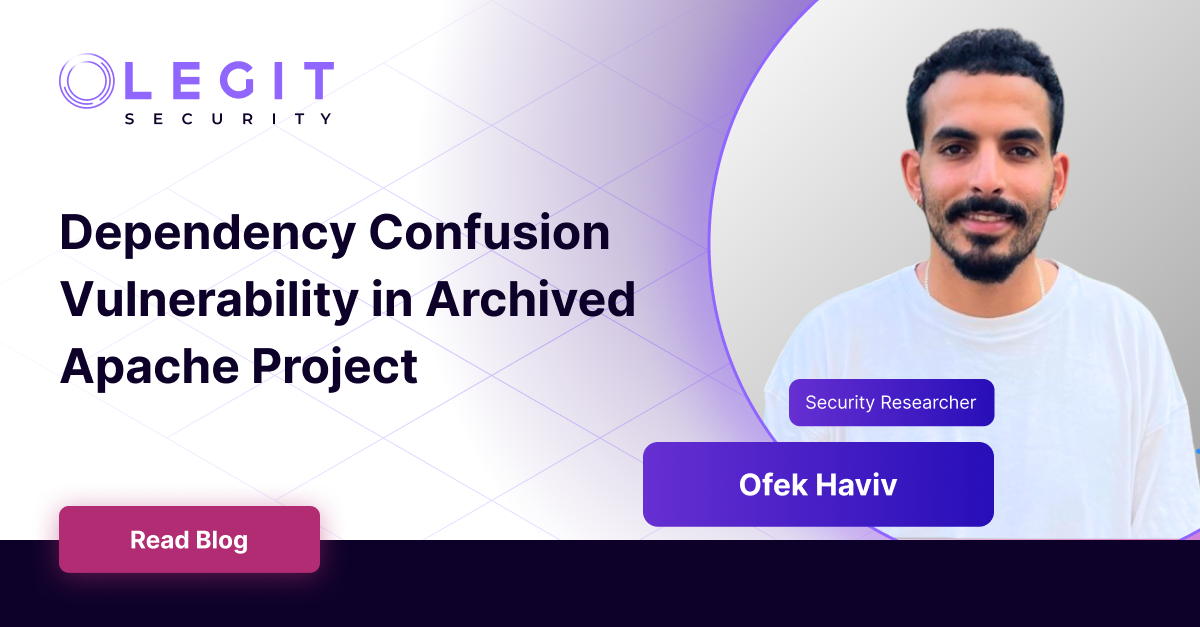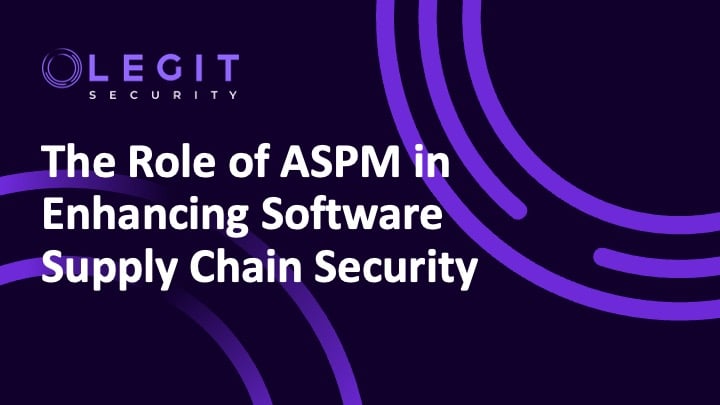Secret scanning is essential for unlocking next-level software supply chain security. Get tips & best practices for optimal secret scanning to secure your code.
The landscape of software development and modern cybersecurity presents unique challenges, especially when it comes to the management and protection of sensitive data across the software supply chain and complex cloud environments. As businesses increasingly rely on digital infrastructures, they need to ensure they’re keeping track of their assets, where their data lives, and properly managing them to minimize accidental exposure or an outright data breach.
One extremely important element here is secrets management and secrets scanning, a critical component in safeguarding your software supply chain against unauthorized access. In this article, we’ll delve into secrets management, scanning, best practices and show you how these advanced security tools and processes can maintain the integrity and resilience of your software supply chain and SDLC.
What Is Secrets Scanning?
To understand secrets scanning, we need to first define what "secrets" are in software. Secrets are sensitive pieces of information crucial to the security of applications and systems. This includes credentials like API keys, passwords, and certificates—essentially, any data that grants access or control over resources.
Secrets scanning, according to Microsoft, “is a GitHub Advanced Security feature that scans repositories for known types of secrets. It prevents the fraudulent use of secrets that were committed accidentally.” However, it also explains that this type of scanning is available to any public or private repository.
Secrets scanning is designed to detect and manage these secrets within a software development environment and leverages tools and methodologies that search through code repositories to identify secrets that may have been exposed. This is an essential process as even a single exposed secret can lead to significant security vulnerabilities.
What Is Secrets Management?
Secrets management is the overall process that encompasses the handling, storage, and lifecycle management of sensitive data. Several security activities fall under the umbrella of secrets scanning and include continuous code repository monitoring, enabling automated alerts when secrets are detected, and integrating secrets scanning tools within the CI/CD pipeline to prevent merging any code that contains exposed secrets.
The tools used for secrets scanning vary, but often include capabilities like pattern recognition, entropy checks, and integration with existing development tools. These tools are sophisticated enough to differentiate between actual secrets and false positives, a crucial aspect of maintaining workflow efficiency and ensuring efforts and resources aren’t wasted.
Secrets scanning and secrets management is necessary for many organizations’ development environments to ensure proper software supply chain security. Not only are threats continuing to grow and target these environments, the growing complexity and sheer tasks required to keep track of and secure this sensitive data mean organizations need to find automated alternatives.
Secrets Management Best Practices for Better Secrets Scanning
Here are some best practices that will help optimize your secrets scanning to ensure consistency and effectiveness while allowing organizations to scale their secrets management as infrastructures shift and change.
Standardization: Establishing a uniform approach to handling secrets by standardizing the formats and storage methods of secrets across all projects will make your secrets scanning tools more comprehensive and effective in detecting anomalies or misconfigurations.
Key and Credential Management Practices: Effective management of keys and credentials is part of secrets management and includes regular rotation of keys and using secure vaults to offset the risk if any keys are leaked or stolen.
Access Control Protocols: Implementing the Principle of Least Privilege (PoLP) ensures that each component in your system has access only to the secrets necessary for its function to reduce the risk of secret exposure. This will minimize your organization’s overall attack surface, curbing the damage in case of a breach or accidental data exposure.
Automated Secrets Management: Due to the scope and sheer number of elements involved in secrets management, prioritizing automation can vastly improve your team’s effectiveness by saving time and reducing the risk of human effort playing a part in a potential security incident.
Audit and Monitoring: Regular audits and continuous secrets monitoring can help identify any unauthorized access or anomalies in your secrets management, preventing a potential issue or catching an attack before it can cause too much damage.
Encryption in Transit and at Rest: Ensuring secrets are encrypted during transmission and when stored is essential to prevent unauthorized access even if the storage container is compromised.
Integration With Existing Tools and Environment: The secrets scanning process should seamlessly integrate with existing development and operation tools to create a more harmonious DevSecOps environment that ensures security without compromising on productivity.
Implementing these best practices not only optimizes secrets scanning but also elevates your overall SDLC security and resiliency. It's a proactive approach that will keep a department’s secrets management effective regardless of infrastructure and environmental shifts.
Tips for Optimizing Your Secrets Scans
To further improve your secrets scanning, secrets management best practices help but it’s also about optimizing your secrets scans with more than just the right tool. Here’s how to get more from your secrets scans.
Evaluate Where Your Scans Happen
To optimize your secrets scanning, you should evaluate where your scans are conducted. It's not just about scanning your primary codebase, it's also crucial to include any subsidiary modules, libraries, or services that your applications and assets interact with. Many security breaches occur due to overlooked components in the broader system. A comprehensive scan across all parts of the software ecosystem, including third-party services and internal repositories, is essential for effective secrets management that will ensure no vulnerable point is left unguarded.
Consider Automation
Automation can significantly reduce the manual effort involved in scanning and can facilitate frequent checks in a more consistent manner. By integrating these secrets detection tools into your CI/CD pipeline, you can ensure that every element is scanned automatically, and any accidental secret exposures are caught in real-time. This proactive approach not only saves time but improves performance and reliability.
Review Your Secrets Scanning Tools
The threat landscape of software development is constantly evolving, and your tools need to keep pace. Ensure that your secrets scanning tools are updated with the latest information and capabilities so they can detect new types of vulnerabilities. It's also worthwhile to periodically assess new tools in the market, as they might offer improved detection capabilities or better integration with your existing infrastructure.
Always Scan Configuration Files
Tools like the git secrets scanner should be configured to scrutinize configuration files, and you should always review the capabilities of your secrets scanning tools to be as comprehensive as possible. Configuration files can often contain sensitive information like API keys or database credentials so it’s important to ensure these files are included in your regular scans to prevent potential security lapses.
Check for Hard Coded Secrets
Developers might sometimes embed secrets directly into source code for convenience, not realizing the security risks. This may lead to hardcoded passwords and cryptographic keys stored in plain text that can be easily scraped. If discovered, a threat actor can easily make its way into an organization and access even more sensitive data. Policies, tools, and creating a culture of security within your dev team can help avoid this potential issue.
Keep Scans Up-to-Date and Comprehensive
Lastly, ensure that your scanning processes are both current and comprehensive by updating scanning parameters to include new types of secrets and regularly reviewing the scope of the scanning tools to ensure they’re covering all possible areas where secrets might reside. Treating this similar to a patch rather than a yearly update ensures you’re able to adapt to any changes in your infrastructure and catch any new potential vulnerabilities or misconfigurations that might have arisen.
Secure Your Secrets to Protect Your Software Supply Chain
Having a robust secrets management strategy is an essential element for securing your software supply chain, which is becoming increasingly important given the outsized importance of the software supply chain in a modern organization’s business operations. To ensure secrets management is done properly, organizations should prioritize effective secrets scanning via tools and processes.
In implementing effective secrets scanning, organizations should look for tools that align with the best practices outlined above, which include comprehensive visibility, automated vulnerability detection, and even providing remediation capabilities. The best secrets scanning tools are those that complement a DevSecOps team and enhance their capabilities, rather than burden them with an abundance of tasks or complex management. This improves resiliency without slowing down a department’s efficiency, allowing it to maintain productivity and manage risks effectively.
The Legit Security platform is designed with these priorities in mind. It offers comprehensive scanning, asset discovery, and vulnerability detection in complex developer environments. With automated features and remediation capabilities, it allows DevSecOps teams to fully secure their environment and code across the entire SDLC lifecycle.
To learn more about how Legit Security can help you secure your software supply chain through secret scanning, check out our solution page here.



